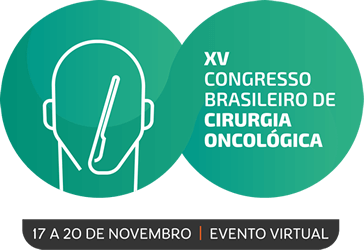Dados do Trabalho
Título
COMPARISON BETWEEN CHEMOTHERAPY PLUS RADIOTHERAPY VERSUS ISOLATED CHEMOTHERAPY IN NEOADJUVANT TREATMENT OF EXTREMITY SOFT-TISSUES SARCOMAS IN ADULTS
Introdução
Extremity soft-tissues sarcomas (STS) are a rare entity of neoplasms that represent 1% of solid tumors in adults. Surgery is the essential treatment and conservative limb resection with adjuvant radiotherapy (RT) is associated with good local control rates. However, there is no change in overall survival (OS), and high rates of pulmonary relapse and death have motivated an adjuvant systemic approach. With the rationale of early treatment of micrometastatic disease and downsizing of lesions, neoadjuvant therapy is an outstanding technique, although there is no consensus about what would be the most appropriate approach.
Objetivo
We aim with this study to compare survival rates between two STS cohorts of patients treated at different times: one with RT concomitant to chemotherapy (ChT) followed by surgery, and another with only ChT followed by surgery.
Método
Observational retrospective cohort study. The first (group 1) included patients undergoing RT concomitantly with neoadjuvant doxorubicin from Jan/1995 to Dec/2004, and the second (group 2) included those undergoing ChT with doxorubicin and ifosfamide, followed by surgery and postoperative RT that were treated from Apr/2005 to Jul/2012, all approved by ethics committee.
Resultados
One hundred patients were included (49 in group 1 and 51 in group 2). The median age was 45 ± 15.22 years with similar distribution between genders (51% female and 49% male). Lower limb STS accounted for 71% of cases, followed by tumors in the upper limb (14%), pelvic (8%) and scapular girdle (5%). Predominant histological types were sinovial sarcoma (26%), liposarcoma (14%), pleomorfic sarcoma (14%) and leiomyosarcoma (10%), and the majority were high-grade tumors (70%). Surrounding soft tissue resection occurred in 63%, 17% required extended resections and amputation/disarticulation occurred in 10% of cases. Relapses occured in 54% of patients, most in the lungs (42%). After a median follow-up of 9,41 years, 38% were alive without disease and 51% died. There was no difference in OS when comparing both cohorts, but an analysis including only high-grade tumors showed higher recurrence free survival (RFS) in group 2 (median 19 versus 132 months; p=0.078).
Conclusão
In our retrospective analysis, neoadjuvant ChT was associated with greater RFS in patients with high-grade extremity STS as compared to neoadjuvant chemorradiation. For patients with high risk of relapse neoadjuvant ChT should be considered after a multidisciplinary discussion.
Palavras-chave
Soft-tissue sarcoma; neoadjuvant therapy; high risk patients
Área
Sarcomas / tumores ósseos
Autores
JACQUELINE NUNES MENEZES, SAMUEL AGUIAR JUNIOR, CELSO ABDON LOPES DE MELLO, WILSON TOSHIHIKO NAKAGAWA, PAULO ROBERTO STEVANATO FILHO, TIAGO SANTORO BEZERRA, TOMAS MANSUR DUARTE DE MIRANDA MARQUES, RENATA MAYUMI TAKAHASHI, BRUNA ELISA CATIN KUPPER, ADEMAR LOPES
